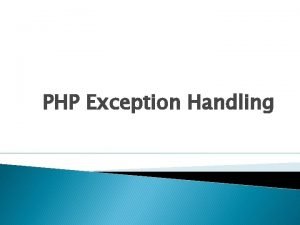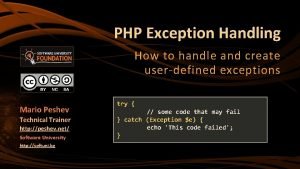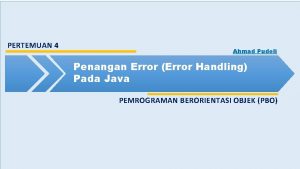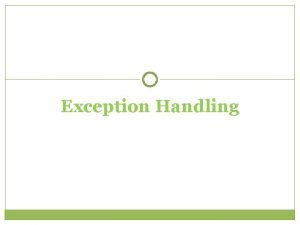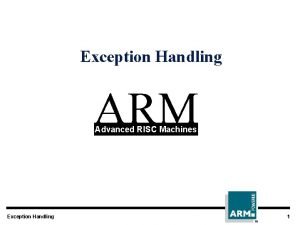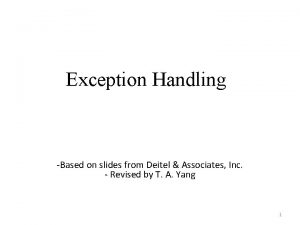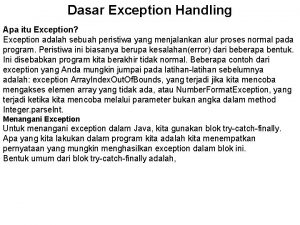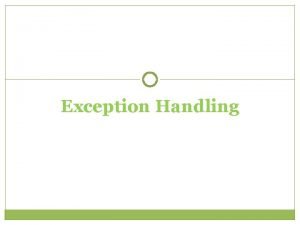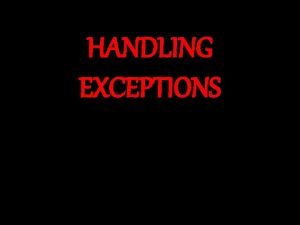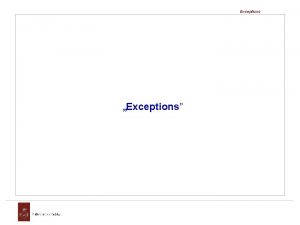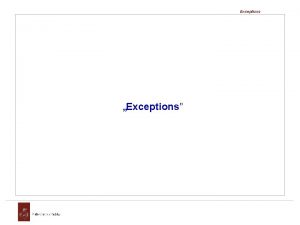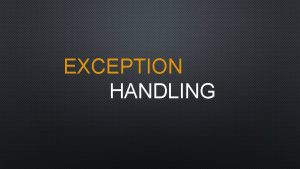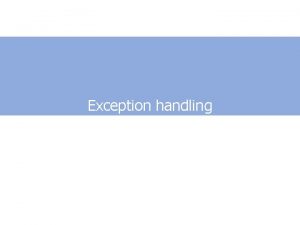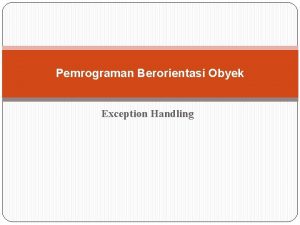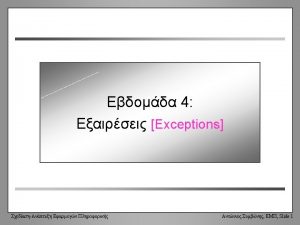PHP Exception Handling What is an Exception Exceptions









- Slides: 9

PHP Exception Handling

What is an Exception � Exceptions are used to change the normal flow of a script if a specified error occurs. � This is what normally happens when an exception is triggered: � The current code state is saved. � The code execution will switch to a predefined (custom) exception handler function. � Depending on the situation, the handler may then resume the execution from the saved code state, terminate the script execution or continue the script from a different location in the code.

Basic Use of Exceptions � When an exception is thrown, the code following it will not be executed, and PHP will try to find the matching "catch" block. � If an exception is not caught, a fatal error will be issued with an "Uncaught Exception" message.

Continued. . � <? php //create function with an exception function check. Num($number) { if($number>1) { throw new Exception("Value must be 1 or below"); } return true; } //trigger exception check. Num(2); ? >

Continued. . � Fatal error: Uncaught exception 'Exception' with message 'Value must be 1 or below' in C: webfoldertest. php: 6 Stack trace: #0 C: webfoldertest. php(12): check. Num(28) #1 {main} thrown in C: webfoldertest. php on line 6

Try, throw and catch � To avoid the error from the example above, we need to create the proper code to handle an exception. � Proper exception code should include: � Try - A function using an exception should be in a "try" block. If the exception does not trigger, the code will continue as normal. However if the exception triggers, an exception is "thrown" � Throw - This is how you trigger an exception. Each "throw" must have at least one "catch" � Catch - A "catch" block retrieves an exception and creates an object containing the exception information

Continued. . � <? php //create function with an exception function check. Num($number) { if($number>1) { throw new Exception("Value must be 1 or below"); } return true; } //trigger exception in a "try" block try { check. Num(2); //If the exception is thrown, this text will not be shown echo 'If you see this, the number is 1 or below'; } //catch exception catch(Exception $e) { echo 'Message: '. $e->get. Message(); } ? >

Continued. . � Example explained: � The code above throws an exception and catches it: � The check. Num() function is created. It checks if a number is greater than 1. If it is, an exception is thrown � The check. Num() function is called in a "try" block � The exception within the check. Num() function is thrown

Continued. . � The "catch" block retrieves the exception and creates an object ($e) containing the exception information � The error message from the exception is echoed by calling $e->get. Message() from the exception object � However, one way to get around the "every throw must have a catch" rule is to set a top level exception handler to handle errors that slip through.
